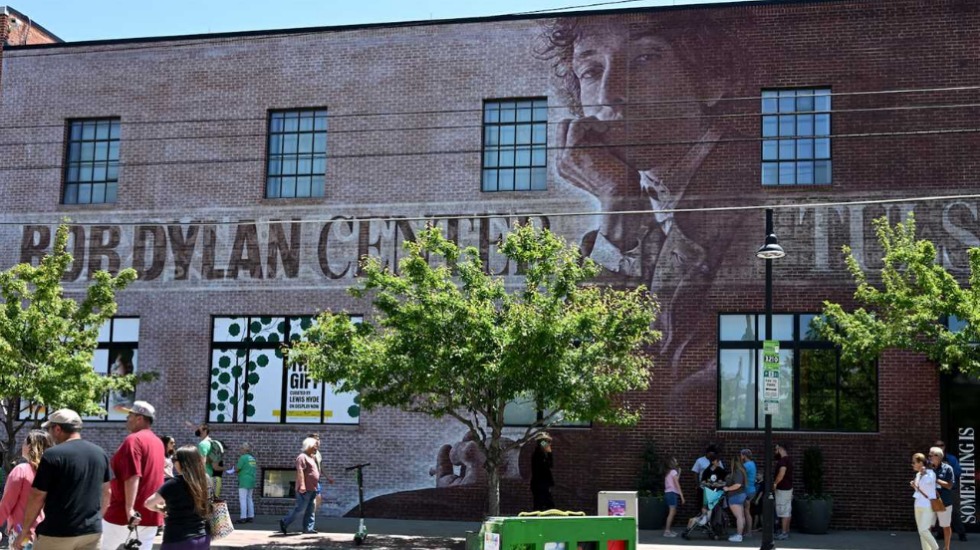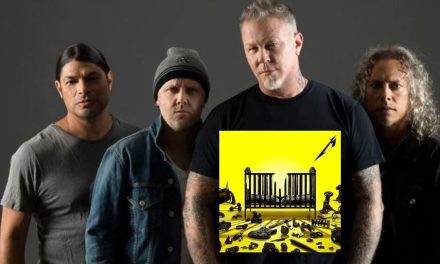The Bob Dylan Center opens this week in Tulsa, Oklahoma. Photo: GETTY IMAGES
Bob Dylan has made a career out of not looking back.
His philosophy can be gleaned, if one were to be so bold to attempt to reach into his mind, in a line of his from a few years back: ‘‘Life isn’t about finding yourself or finding anything. Life is about creating yourself and creating things.”
Or as the young Dylan sang more than 50 years ago, “He not busy being born, is busy dying.”
It comes as no surprise then that about six years ago Dylan sold his archive (he has also recently sold his song catalogue) of more than 100,000 items, and from that sale has grown, indeed been constructed and due to open this week, a Dylan museum – The Bob Dylan Centre in Tulsa, Oklahoma.
Dylan played in Tulsa a few weeks ago. He didn’t call by to see how the museum in his name and honour was going. He went to a minor league baseball game featuring the Tulsa Drillers.
Perhaps he’ll swing back to have a look when no one is there, but then again, he knows what’s in there. It’s not as if it’s an unknown life he would be looking at. He’s lived through it once.
There is a nice historical symmetry to the museum being in Tulsa. The Woody Guthrie Center is also there. Indeed, you can buy a discounted ticket for entry to both museums. Guthrie was, of course, the young Dylan’s idol. Dylan visited the dying Guthrie and sang to him (The archives of Phil Ochs are also stored at the Guthrie centre).
Both centres were made possible by a foundation set up by billionaire George Kaiser.
Steve Jenkins, the Dylan centre’s director, told The Washington Post: “The scope of the material and its impact is almost without equal. But we have no intention of trying to explain the Bob Dylan mystery. No matter how hard we try, the man at the core of all this somehow continues to remain elusive.”
PLEASE HELP US CONTINUE TO THRIVE BY BECOMING AN OFFICIAL FOOTYOLOGY PATRON. JUST CLICK THIS LINK.
Wise call. As much as critics, scholars (yes there are institutions for the study of Bob Dylan) and laypeople might try to join the dots of Dylan’s life and work, and as much as some might feel they have arrived at an answer, they haven’t.
Of course, one can feel free to do so, but one should know whatever the map that’s drawn it’s only ever going to mark the roads, byways and highways, the arrivals and destinations.
Charting the breeze of creativity, the slant of light on the pen, is unknowable. Except to the creator.
When Dylan was awarded the Nobel Prize for Literature it set off a brushfire of controversy along the lines of how could a songwriter be given a prize for literature? Lyrics are literature? Pssht.
But as historian Douglas Brinkley told the Post: “The Nobel Prize caused sceptics – those who didn’t like Dylan’s voice or thought his artistry was only related to folk and rock ’n’ roll – to wake up and realise he’s one of our greatest literary masters, a national treasure.
“He’s one of those artists like Louis Armstrong, Hank Williams or Woody Guthrie who embodies the best of the American spirit and is loved around the world.”
Let’s not go too far there on that last part. Dylan is loved around the world, but he is also not loved around the world. And that’s fine, indeed how it should be. Take him or leave him. The artist is not an artist for the love of humankind.
It is impossible to see the museum, however, not becoming a loved destination for everyone whose life has been touched by Dylan’s work. For ardent fans there are notebooks of his lyrics, the evolution of songs from first word to performance. And there is even the Turkish drum that was the inspiration for ‘Hey Mr Tambourine Man’.
After myriad awards, including the Everest of them all, the Nobel, after waves of praise from songwriters of his influence (Shane Howard once said Dylan gave them, meaning singer-songwriters, all jobs), and now a museum, what is left?
The road. Dylan is back touring. May he again come to our shores.











